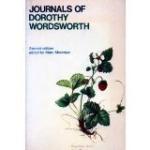|
This section contains 7,170 words (approx. 24 pages at 300 words per page) |

|
SOURCE: Easley, Alexis. “Wandering Women: Dorothy Wordsworth's Grasmere Journals and the Discourse on Female Vagrancy.” Women's Writing 3, no. 1 (1996): 63-77.
In the following essay, Easley scrutinizes Wordsworth's ideological relationship to the vagrant women who are frequently mentioned in her journals.
Dorothy Wordsworth in Context
During the time that Dorothy Wordsworth was composing the Grasmere Journals (1800-1803), English society was engaged in a heated debate over what to do about the vagrant poor. Industrialization and enclosure laws had produced a large transient population that traveled from parish to parish, peddling, begging, or looking for work. Like many writers of the period, Dorothy Wordsworth attempted to depict the poverty she saw around her—particularly the many wanderers she encountered on the footpaths and at her doorstep. Many recent critics have praised the sensitivity of these portrayals, claiming that Dorothy Wordsworth presents her observations of the poor as expressions of her sympathy...
|
This section contains 7,170 words (approx. 24 pages at 300 words per page) |

|


